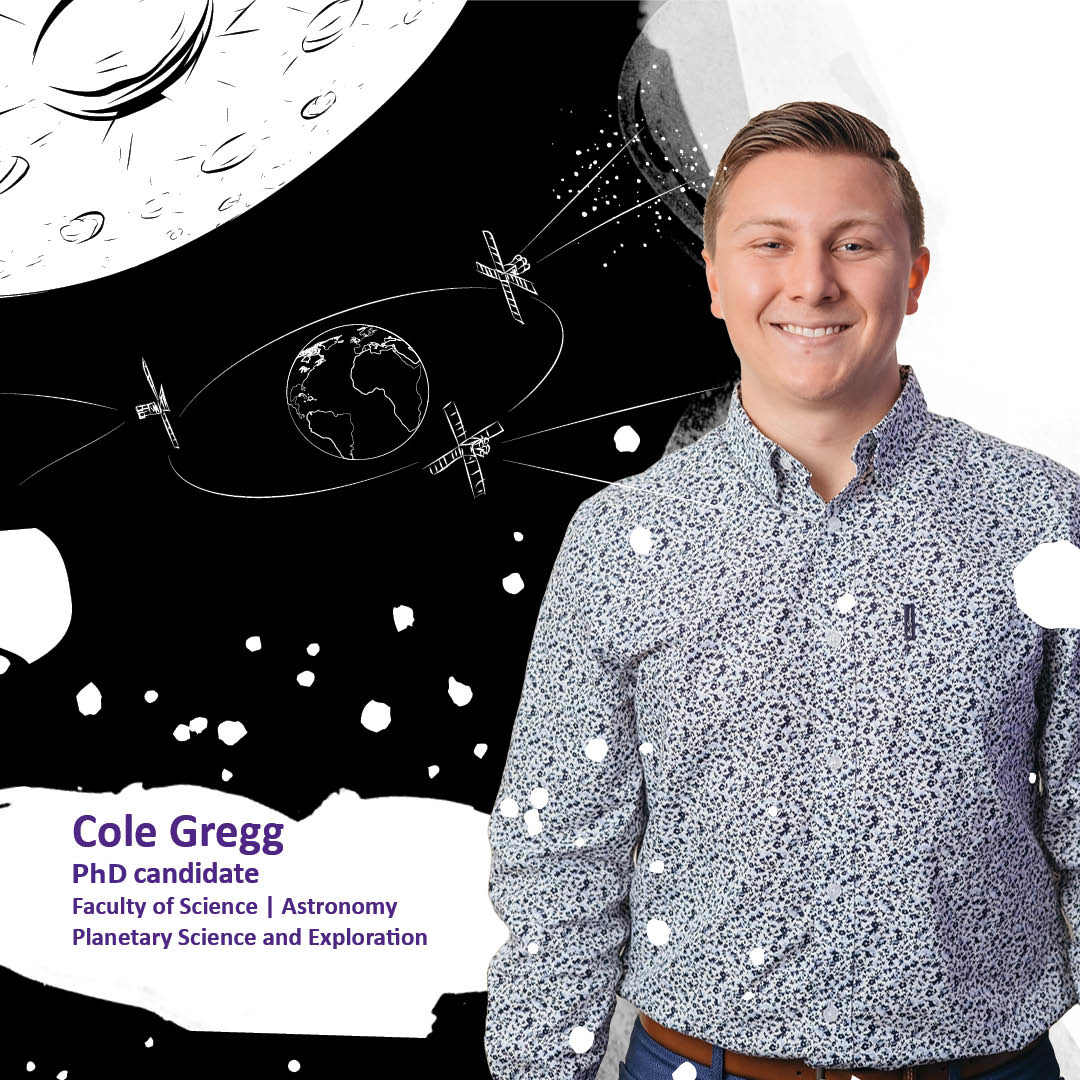About Me

I am an Astronomy PhD candidate (Collaborative Specialization in Planetary Science and Exploration) in the Department of Physics and Astronomy and the
Institute for Earth and Space Exploration at Western University. My current research interests
are in dynamical astronomy and minor body detection. I'm currently working under the supervision of
Dr. Paul Wiegert, examining the interstellar meteoroid population in the Solar
System through dynamical modelling of material ejected from nearby star systems. I hope to contribute to the understanding of
interstellar transfer and the population estimates for interstellar visitors currently present in the Solar System.
I have completed both my BSc (Honours Specialization in Astrophysics with distinction and a Minor in Advanced Physics) and MSc (Astronomy with a
Collaborative Specialization in Planetary Science and Exploration) at Western University. My significant contributions to research and development
include my MSc project, A Dedicated Lunar Trojan Asteroid Survey with
Small Ground-Based Telescopes published in Monthly Notices of the Royal Astronomical Society (MNRAS).
The target audience for this journal is those interested in positional and dynamical astronomy and the design of astronomical instruments, an apt fit
for this paper. I am the main author on this submission, with my supervisor as co-author. As a result of my research, I
submitted an observation of a previously unknown near-Earth object to the Minor Planet Centre
(the international clearing house for asteroid observations). Furthermore, I deduced an
upper limit on the number of asteroids co-orbiting Earth with the Moon, providing insight on potential objectives of future cislunar missions that can
arise from the upcoming Artemis missions to the Moon. The work of this paper was showcased in Western University's
Inspiring Minds campaign,
which seeks to broaden awareness and impact of graduate student research, as well as
Discovery Canada's social media accounts. The asteroid discovery was also covered in
Western's media relations, then shared by the Canadian Space Agency
and highlighted in the news across Canada, including the local newspapers and radio stations, as well as CBC News radio and television.
